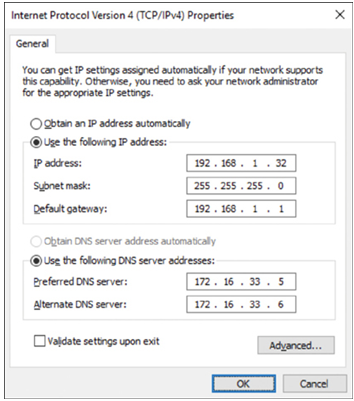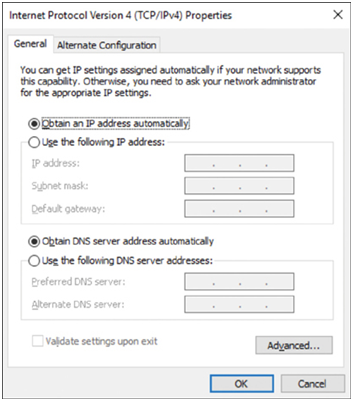Upon completion of this chapter, you will be able to answer the following questions:
• What is the difference between static and dynamic IPv4 addressing?
• Configure a DHCPv4 server to dynamically assign IPv4 addresses.
This chapter uses the following key terms. You can find the definitions in the Glossary.
Dynamic Host Configuration Protocol (DHCP)
Kishori’s nursing station just received a new laptop from the IT department. The IT specialist, Madhav, is setting it up on the desk and trying to connect to the network. He asks Kishori to log in to the computer. She enters her username and password and attempts to access a patient file. She explains that there must be a connection error. Madhav takes a seat to further investigate. Madhav checks the cable and it is connected. On his tablet, he pulls up the list of IPv4 addresses for all of the computers on this floor on this network. He found the issue! There is an error in the IPv4 address. Madhav explains that the intern in their department may have manually configured the network information on this host, rather than using Dynamic Host Configuration Protocol (DHCP). Kishori has not heard about DHCP. She is going to do some reading on this topic.
Are you ready to learn about DHCP? I am here to help! Let’s get started with this module!
Static and Dynamic Addressing (11.1)
It is important that devices have the correct IPv4 addressing information. This includes the IPv4 address, subnet mask, default gateway address and DNS server address.
Static IPv4 Address Assignment (11.1.1)
IPv4 addresses can be assigned either statically or dynamically.
With a static assignment, the network administrator must manually configure the network information for a host. At a minimum, as shown in Figure 11-1, this includes the following:
• IP address — This identifies the host on the network.
• Subnet mask — This is used to identify the network on which the host is connected.
• Default gateway — This identifies the networking device that the host uses to access the internet or another remote network.

Figure 11-1 Static IPv4 Addressing on a Windows PC
Static addresses have some advantages. For instance, they are useful for printers, servers, and other networking devices that need to be accessible to clients on the network. If hosts normally access a server at a particular IPv4 address, it would not be good if that address changed.
Static assignment of addressing information can provide increased control of network resources, but it can be time consuming to enter the information on each host. When IPv4 addresses are entered statically, the host only performs basic error checks on the IPv4 address. Therefore, errors are more likely to occur.
When using static IPv4 addressing, it is important to maintain an accurate list of which IPv4 addresses are assigned to which devices. Additionally, these are permanent addresses and are not normally reused.
Dynamic IPv4 Address Assignment (11.1.2)
On local networks it is often the case that the user population changes frequently. New users arrive with laptops and need a connection. Others have new workstations that need to be connected. Rather than have the network administrator assign IPv4 addresses for each workstation, it is easier to have IPv4 addresses assigned automatically. This is done using a protocol known as Dynamic Host Configuration Protocol (DHCP).
DHCP automatically assigns addressing information such as IPv4 address, subnet mask, default gateway, and other configuration information, as shown in Figure 11-2.

Figure 11-2 Dynamic IPv4 Addressing on a Windows PC
DHCP is generally the preferred method of assigning IPv4 addresses to hosts on large networks because it reduces the burden on network support staff and virtually eliminates entry errors.
Another benefit of DHCP is that an address is not permanently assigned to a host but is only leased for a period of time. If the host is powered down or taken off the network, the address is returned to the pool for reuse. This is especially helpful with mobile users that come and go on a network.
